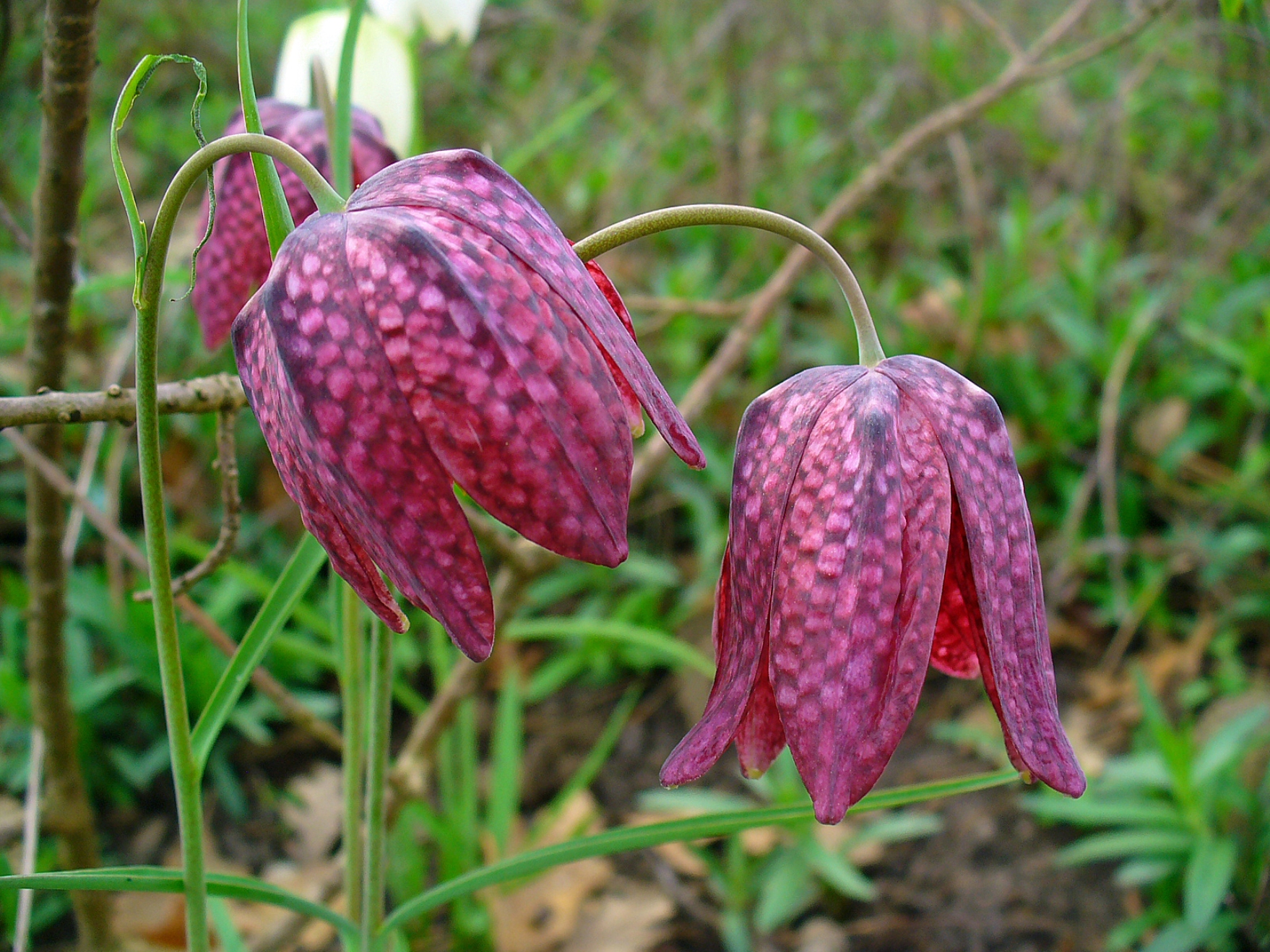Time to Plant Fritillaria
Saturday, September 14, 2013 @ 3:45 AM

Fritillaria meleagris, Photo- H.Zell courtesy Wikimedia
Fritillaria bulbs are now available in the garden centres.
These Fall bulbs are not as well known as the tulips and daffodils but they are certainly worth planting. The bulbs produce beautiful six petalled, flowers that bloom in the spring. Two fritillaria types that are available and grow well in our area are the Fritillaria-Crown Imperial, and Fritillaria meleagris.
We have had the Fritillaria meleagris, commonly called Checkered Lily or Snake’s head lily growing in our flowerbeds at the house for many years. They are very hardy and require very little to no maintenance. It is hard to believe that something so beautiful and exotic looking would be so easy to care for. The bell shaped flowers hang down from thin 20 cm tall stems. The name Checkered lily comes from the various shades of purple checkered flower heads. The flowers can also be a white or cream colour. They bloom mid to late spring and the blooms will last 2-3 weeks. After they have finished blooming they are left to die back naturally, including the flower that will form seeds. The seeds will self sow easily giving you a larger display as the years go by. Allow the foliage and stems to die completely as this is important for healthy bulbs and flowers for next year. The dead foliage can be removed when it is easily pulled, without disturbing the bulb under the ground. The bulbs prefer to be left undisturbed and are a good choice for naturalizing.
Plant Fritellaria meleagris in a moist, well drained area where it will receive full sun. Soil benefits from being amended with compost, old manure, or peat moss. Bulbs are planted in groups of 10 or more for the best visual impact. Plant the bulb at a depth of 10-12 cm deep and space 15 cm apart. Sprinkle some bonemeal in the bottom of the hole before placing the bulbs. Give the planted bulbs a good water and continue to keep the soil moist but not soggy until the frost sets into the ground. Plant the bulbs in September as soon as you purchase them so that they are able to get a good root system before the frost sets into the ground.
Fritillaria-Crown Imperial are tall, growing 90 cm in height making them a good choice for the back of the flowerbed. When in bloom they make a bold statement. There is a tall stem with green leaves and the cluster of flowers hang from the top of the stem. Above the flower cluster is cluster of narrow leaves. Each flower has a drop of nectar that hangs from it and is enjoyed by bees, and hummingbirds. The fragrant flowers are yellow( Lutea Maxima), striped (Striped Beauty), or orange/red (Rubra).
The Fritillaria imperialis bulbs are quite large. They should be planted 20-30 cm deep in a well drained soil. The bulb will rot if it is kept too wet, and this is a problem for the imperialis bulbs. When you look at the bulb you will notice a hole in the centre of the bulb and this is where the stem was. Plant the bulb slightly on its side to prevent water from sitting in the hole causing the bulb to rot. They like to be in sun to partial shade. After the bulb has finished blooming allow the stem and foliage to die back naturally as this is important for it to re-bloom the following spring.
Be careful when handling and planting the bulb as they are delicate and can be damaged easily. Plant the bulbs as soon as you bring them home. Some people with sensitive skin may feel itchy when they touch the bulb so wear gloves. A nice feature about the Fritillaria bulbs is that rodents and deer do not like the bulb or plant, and will leave them alone.
The trick to growing fritillaries successfully is finding the right spot and be careful with the water. Once planted they prefer to be left, but if you do decide to divide the bulbs, do it after the foliage has died off and replant the bulbs immediately.
-Jos
Jos Van Hage owns and operates two Art Knapp Home and Garden Centres in Prince George:
Highway 16 west at Kimball Road
Highway 97 North at Northwood Pulpmill Road.

Comments
Comments for this article are closed.